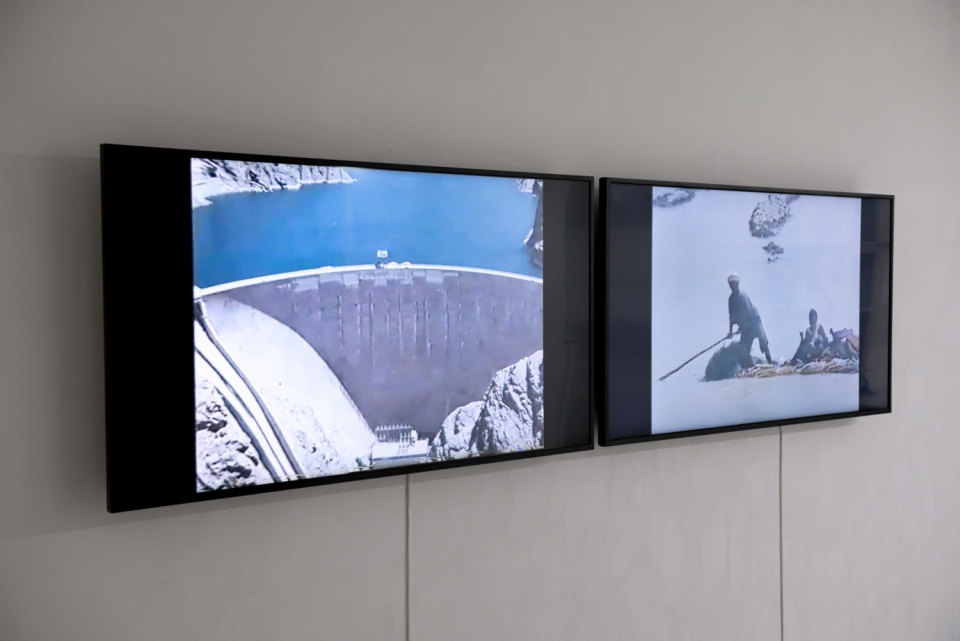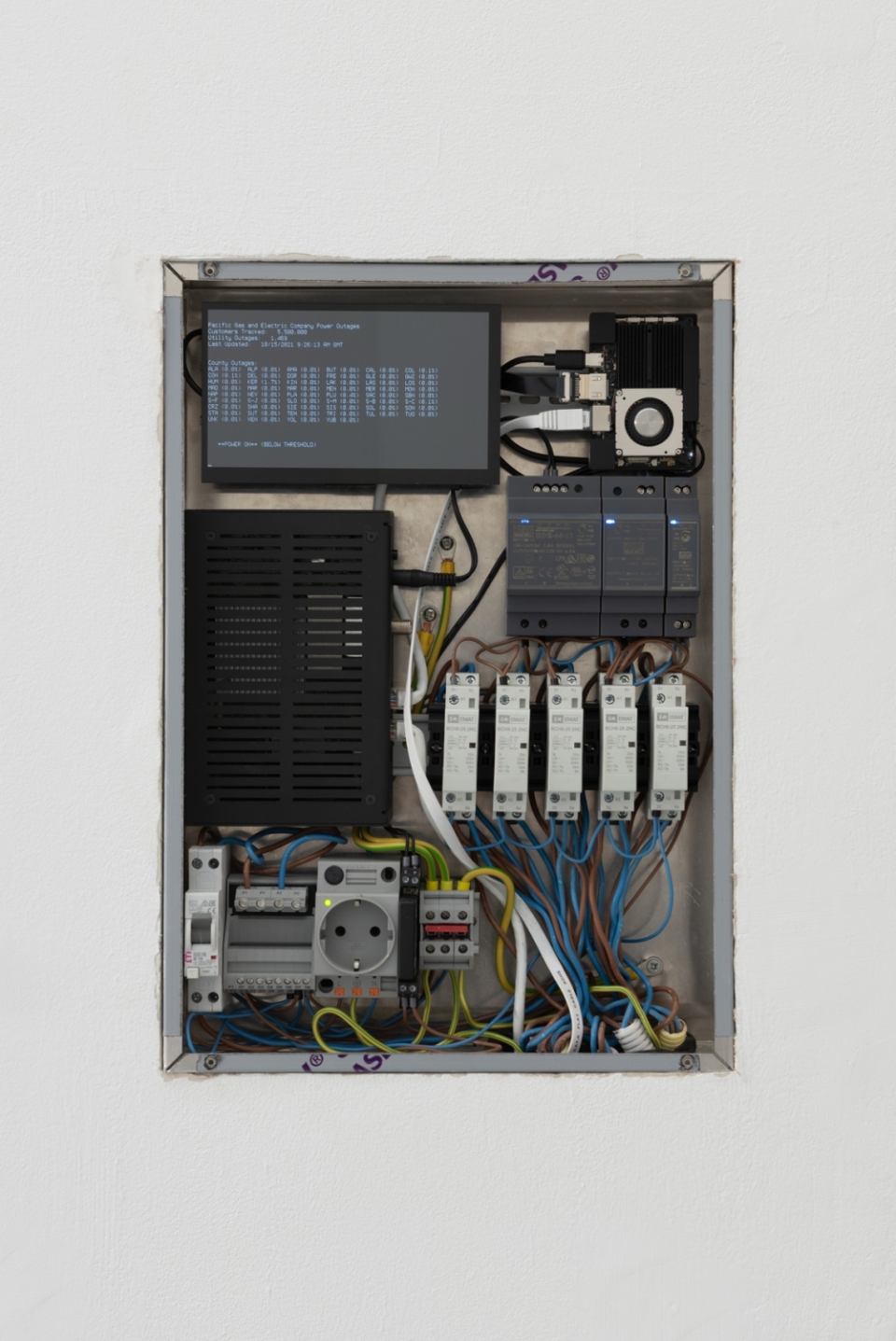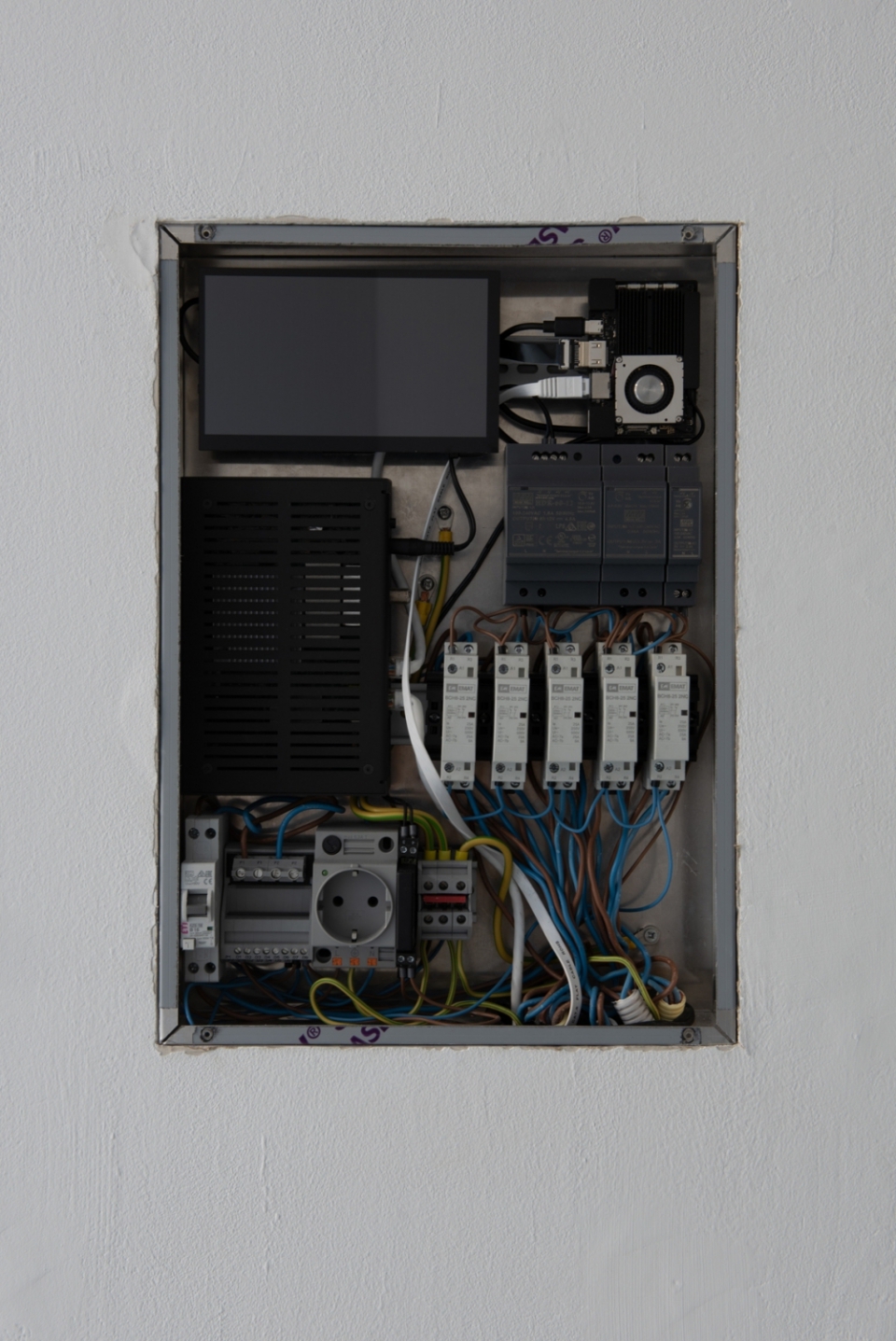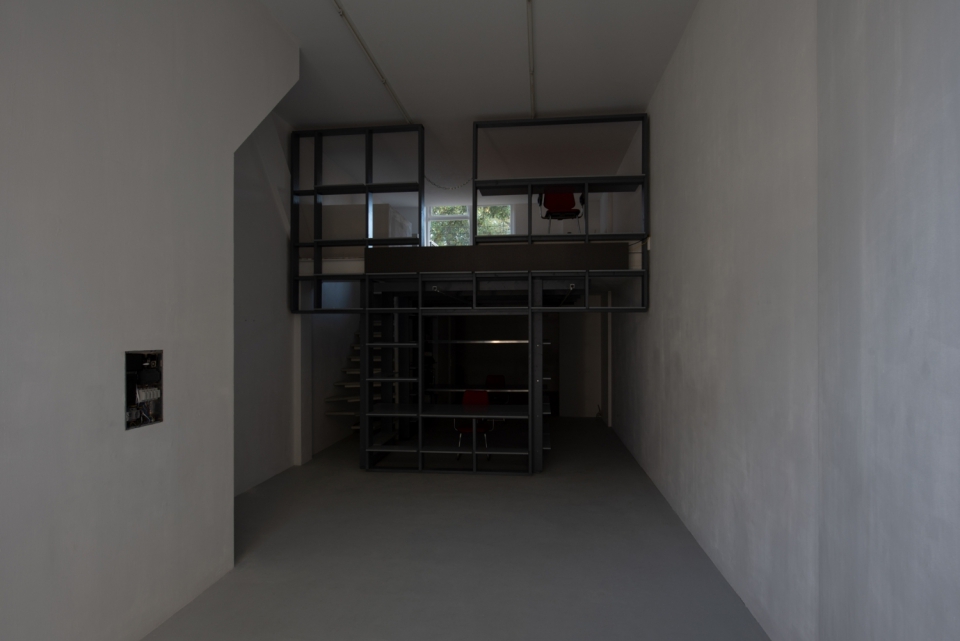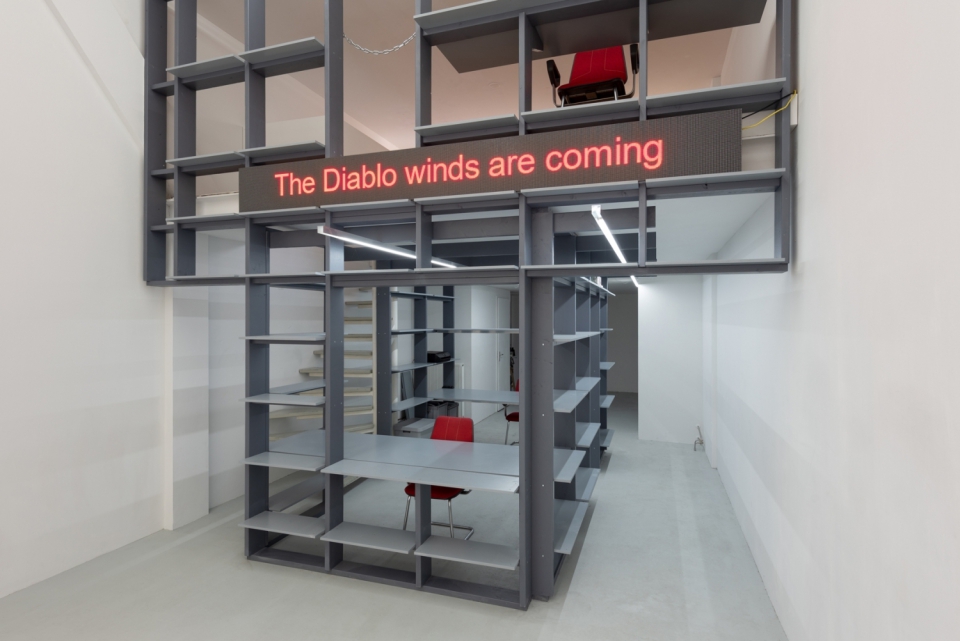The Last Terminal: Reflections on the Coming Apocalypse
Introduction by Maziar Afrassiabi
17.09.2021 – 31.12.2023
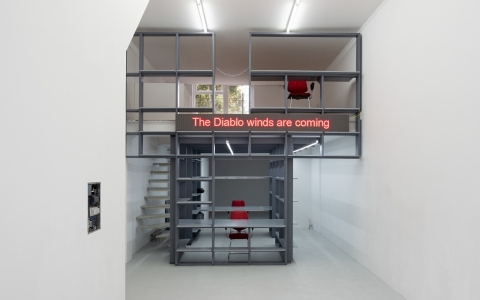

Exhibition view The Last Terminal: Reflections on the Coming Apocalypse: Mathew Kneebone, Power Relations and scenography by Olivier Goethals, September 2021. Photo: Lotte Stekelenburg
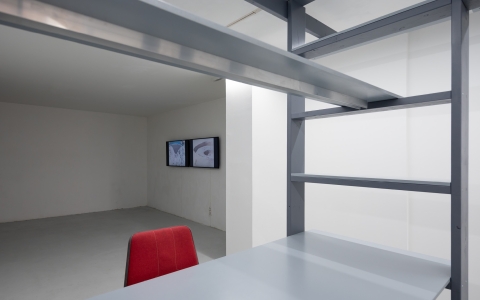

Scenography (detail) by Olivier Goethals and installation view Albert Lamorisse, Baadeh Sabah/The Lovers’ Wind/Vent Des Amoureux, 1970/1978 (right) and Title Unknown (Postscript to Baadeh Sabah), 1970/1978 (left). Photo: Lotte Stekelenburg
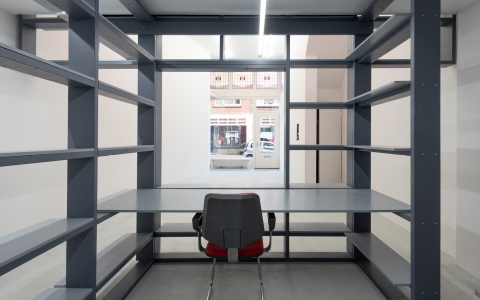

Exhibition view The Last Terminal: Reflections on the Coming Apocalypse: Mathew Kneebone, Power Relations and scenography by Olivier Goethals, September 2021. Photo: Lotte Stekelenburg
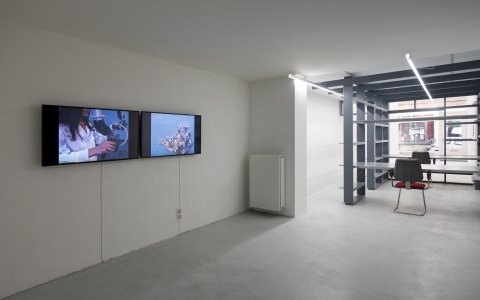

Installation view Albert Lamorisse, Baadeh Sabah/The Lovers’ Wind/Vent Des Amoureux, 1970/1978 (right) and Title Unknown (Postscript to Baadeh Sabah), 1970/1978 (left); scenography by Olivier Goethals. Photo: Lotte Stekelenburg
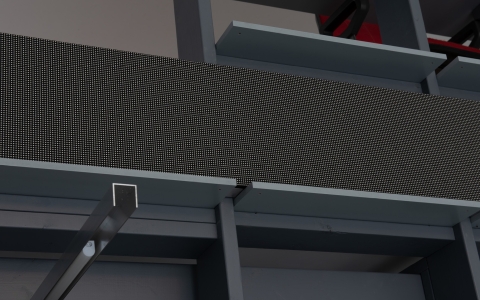

Installation view Mathew Kneebone, Power Relations (detail), during blackout, September 2021. Photo: Lotte Stekelenburg
Thinking about the future of Rib while developing a new chapter in its history, we thought about Rib’s end too, its finality. We cannot hide the fact that as we go on with our business, feelings of futility loom, in a world whose ending and ends have almost fully overlapped. We thought about the relation between this double meaning of the word end: the possibility of ending and the question of to what purpose one must endure?
Can Rib as an ‘institution’ be a means without end; a reflexive and self-conscious process; an apocalyptic space: a space of revelation?
Far from a thematic show, The Last Terminal, is an adventure of reflexivity, rethinking the social function of an exhibition, not only what we see but also how we see it.
We begin with an initial parameter, Le vent des amoureux (Baadeh Sabah, 1978), a film by the late French director Albert Lamorisse (1922–1970) and his uneasy relation with his client the Shah of Iran. We will go beyond the conventional practicalities of exhibition making which always involve a kind of pacification and bracketing of spaces and frames (fill the holes, paint the walls, remove trash, hide the cables, the finances and reports, relations between all participants, changing neighborhood, the outlook of the art world) and work with the sustaining but nevertheless necessarily always problematic infrastructure of the space and the program itself.
In 1968, Lamorisse was asked by the Iranian Ministry of Arts and Culture to make a documentary about Iran—Le vent des amoureux as part of the Shah’s propaganda campaign. The film is an aerial epic, mainly told through the voice of the wind that skims over the rural desert regions of Iran. However, the Shah disapproved of the result and asked for additional footage that would show the developing industries, laboratories and factories, including an important milestone—the Amir Kabir Dam constructed between 1957–1961 by the US firm Morrison Knudsen Co.
In 1970, Le vent des amoureux’ ending was literally cut with the death of its author. While recording aerial footage over the Amir Kabir Dam in Iran his helicopter became entangled with suspended wires and crashed leading to his and his crew’s death. The camera was later recovered from the bottom of the river and the film was edited according to his written instructions by his wife, Jean Claude Duparc, who often acted as the script girl and assistant director in his films, his son Pascal and the remaining crew who completed the film eight years later with a postscript. The film was nominated for an Oscar in 1978.
This extra footage resulted in a post script of 7 minutes long, which in a sense represents Lamorisse’s unwillingness to make propaganda for the ruler compromising his artistic integrity. In the new film the steady gliding aerial shots of Le vent des amoureux have been replaced by a nervous and pronounced edit. The visual material has been edited in an accelerated manner and the accompanying music is tense. Laboratories and factories seem full of threat, the machines without souls and human figures appear like zombies. The result is a disturbing portrait of the Shah’s coveted modernization. It is in a sense a harbinger of the revolution to follow in 1979.
In the first chapter of this program artist Mathew Kneebone has created a work that electrically connects to Rib’s infrastructure. His intervention will—in real-time—trigger blackouts in the building when they occur in his state of California. Rib and our operations including other works on display depend on electricity to function. Will the show end without it? Will it be incomplete? Will we need to burn wood and light candles during winter days? What will a blackout generate? It may induce liminality at Rib forcing us to redefine how we operate and interact.
The imminent ending of the operational status quo at Rib instigated by Kneebone is a transcription of how Lamorisse’s film was cut short as a direct result of the divergent expectations between artist and client leading to the helicopter crash which finally made the camera stop recording.
Artist and architect Olivier Goethals has developed the first stage of a scenography consisting of functional elements and display options as empty signifiers and placeholders for other works which may yet find their place in the program.
These two works which are a response to the space and our initial gesture (Le vent des amoureux) will be introduced at the level of and affecting Rib’s infrastructural conditions and throw it into a mist of uncertainty, anxiety and potentialities inviting and making visible this already existing condition in our field and in the world.
Olivier Goethals studied Architecture and Urban Development. He is working simultaneously as architect and artist. In his wide practice he researches the connection between space and consciousness. Olivier made spatial interventions and artistic installations for venues, such as Het Nieuwe Instituut Rotterdam, Z33 Hasselt, Extra City Antwerp, Be-Part Waregem, SMAK Ghent & Palais De Tokyo Paris. Previously he worked as a freelance senior architect for De Vylder Vinck Taillieu (2008–2016). Since 2010, he is teaching at the KULeuven Architecture Department. He was a guest critic at RU Ghent faculty of Architecture, LUCA School of Arts Experimental Studio and ETH Zurich faculty of Architecture. Goethals is in charge of the design and implementation of all spatial interventions for the art collective 019.
Mathew Kneebone’s practice is founded on research into uncertainties surrounding technology, often combining different histories, myths, and folklore. His work touches upon various media including drawing, electronics, writing, sound, and performance to reconfigure or re-contextualize certain technologies, exploring an ambivalent blend of past and present. His work has recently been exhibited at Kunstverein, Amsterdam; 019, Ghent; Extra City, Antwerp; and Cloaca Projects, San Francisco. His writing has been published in Trigger Magazine, OASE Journal for Architecture, The Bulletins of The Serving Library, Another World, Umwelten, among others. He has given talks and workshops at Minnesota Street Project, San Francisco; V2_ Lab for Unstable Media, Rotterdam; Central Saint Martins, London; Sandberg Instituut, Amsterdam; San Serriffe, Amsterdam; EKA Gallery, Tallinn; Sitterwerk, St. Gallen; UEL, London. He teaches at California College of The Arts, San Francisco, where he is thesis writing supervisor.



